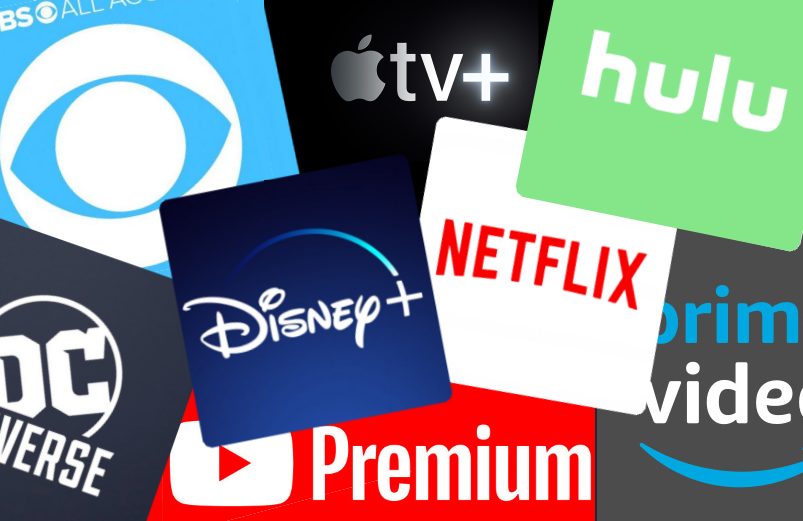The Digital Cliff: The Collapse of Streaming & The Online Devolution

Back in 2018, what seems like a lifetime ago and in internet years is approximately a full digital eon, I wrote an op-ed piece following the unexpected drop of Paramount’s The Cloverfield Paradox on Netflix, which was advertised during the Superbowl and dropped on the streaming platform the moment the final whistle blew. I cleverly titled that piece The Rise of Streaming and The Online Revolution – pithy, I can almost hear you mutter between tapping the screen to order an Uber – and I tried to indicate where I thought the online distribution platform was heading. Like most of my prognostications I got a lot wrong, but I also got just enough right to warrant thinking a follow-up piece might be in order today, if only to give my casual thoughts on where streaming currently sits and where it’s (possibly) heading. As always, take what I say here with a giant dollop of salt, and plenty more besides.
Keep in mind that in the years since I wrote my original piece, which itself was a kind-of follow up to another op-ed from 2010 about BluRay and where I saw that going, we’ve endured a global shutdown thanks to a bastard pandemic and a completely lopsided reliance by much of the world’s population to tap into comparatively cheap, easy-to-access film content on a plethora of platforms. Talk about shooting fish in a barrel – the world is virtually imprisoned for a couple of years and every man, woman and dog on the planet decided to setup a Netflix account. Little wonder the studios saw this as financial windfall that, while unplanned, certainly paved the way for a number of terrible business decisions that have, and will continue to have, repercussions for years to come.

For a while all we had was a few big name players in the streaming market – Netflix, Amazon, HBO (If you were in the US) and a few others were all we had access to – but eventually the lure of the almighty dollar brought competition, and before long a plethora of big name brands were offering subscription-based access to their catalogue and new release offerings, in particular the likes of Disney (with Disney+), Paramount (with Paramount+), and Apple (with Apple TV+), while a flotilla of smaller, bespoke services also sprang up (Shudder, Tubi, and here in Australia more specifically Stan and Binge, to name a couple) and you had viewer attention stretched over multiple services all at a comparatively cheap price point, and almost all without ads (YouTube had also by this point offered an ad-free premium tier). Which was fine if you were locked in your house all day with nothing to entertain you but a bunch of unread books, empty Menulog delivery containers and a shifty looking puppy wondering why he wasn’t able to go outside and walk the neighbourhood any more; the more content you had access to, the better, right?
Well, as it turns out, and as studios have started to figure out since all the lockdowns and restrictions were eased (at the time of writing, we are still not officially out of the pandemic, accordingly to the W.H.O.), a captive audience is a far different beast to satisfy than one with access to the great outdoors. With the end of major restrictions in most streaming a markets, streaming platforms suddenly saw their market shift, and their numbers drop. Cinemas started reopening, shops slowed their “deliver to your door” Covid-era practices and life as we knew it started to return to some semblance of the before times. And in the year or so since then, I don’t think anyone has felt this more keenly than the streaming service industry, mainly because the same audience who once all tuned in to watch Red Notice by the millions suddenly had a whole lot of other life shit to attend to. It was also a point of contention for the industry that the quality of content had a lot to do with customer retention and “churn”, the latter being a euphemism for viewers who stop using a service to save costs and return later when something appears on the service they want to watch; for every one solid major release appearing on Netflix (and I use Netflix as my prime example simply because it remains the biggest fish in this particular ocean) there were a dozen or more The Gray Man or SAS: Rise of the Black Swan, titles that filled a “coming soon” carousel but did little to keep people coming back. It became something of a running joke for film fans that Netflix dropped so much bad or mediocre content on its landing page that it was difficult for people to decipher what was good and what wasn’t.

Exacerbating the problem was the avalanche of alternatives for people to choose from, and compounding that was not knowing which service a film you might have wanted to watch was actually on. Seen a trailer for a new Top Gun movie? Hell, I’ve got Netflix, is it on there? Nope, it’s over on Paramount+ for a six months before it then transitions over to Netflix. So now I have to either sign up to Paramount+ or wait until it drops on a service I do have… ugh, capitalism at its finest. As people shared their account passwords and dropped services for a few months to subscribe to another, studios began to work on ways to retain their customer base and reduce churn. So they did the only thing they could without improving the quality of the shit content they put out each week, they targeted their user base. Locking people out of password sharing. Raising prices (claiming running costs and production expenses were to blame). And, in what I can only assume is the inevitable endgame of this whole enterprise, forcing people who sign up to commit to a lock-in contract, something that I believe (here’s my first supposition!) will only hasten the demise of a significant number of pay-for-play services currently on the market.
The thing about streaming services is they offer disposable entertainment that lacks prestige; if I have access to all the content I could want, inevitably it becomes meaningless because constructive choice is removed entirely. Streaming is a time-waster, a filler thing between leaving for work or putting the kids to bed and settling in for the night. It has become so ubiquitous it’s rarely considered “event” viewing, save for outliers like Game of Thrones or a few others. Having the world of Warner Bros or the entire Disney catalogue at my fingertips at any time of the day or night actually deflates the notion of “going to the movies”, inasmuch as it all becomes just “content” to fill a server, rather than something considered with artistic merit. Doubling down with often very mediocre content and you have an audience malaise that sets in, and people start reconsidering clicking on your next hot franchise-starter.

As cost of living pressure starts to bite, people are having to be more circumspect with their dollars and cents, and spending on leisure and pleasure is usually the first thing to fall by the wayside. We haven’t yet reached the red line for Netflix pricing that I’ve heard about yet, where people suddenly go nope that’s not worth it in large numbers, but we surely have to be reaching that point. It might seem like I’m crucifying Netflix for the industry’s woes, but they shouldn’t feel like they’re shouldering all the blame. Every subscription service has raised its prices in the last few years, most by a considerable margin compared to the bottomless money-pit Covid era, which forces more people to drop the service altogether or resort back to the old faithful sailing of the high seas to obtain content. I’ve yet to see a solid report on the effects of digital piracy on streaming services but I would lay hard currency on the increase in prices being a factor in any rise. Recent industrial action in one of the world’s biggest filmmaking markets, Hollywood, by the Writers Guild of America and the Actors Guild Of America, have forced streaming services to start to pay up on contract negotiations for residuals and the knock-on effects of that is higher production costs, and eventually higher subscriber costs for all. Somebody, somewhere, has to pay the ferryman.
So if you factor in content nobody can find – and let’s face it, more people spend two hours scrolling through hundreds of films and shows to find something to watch only to switch off the screen and go to bed because it’s well after bedtime by the time you decide to binge rewatch Friends or The Big Bang Theory for the fiftieth time, than people who click to watch the first thing that pops up – and a hundred platforms swapping, dropping and making it incredibly difficult to watch the movie you actually want to watch, and you have an ecosystem that’s bordering on antisocial to the viewer. So the collapse has begun. Smaller services are closing, or amalgamating, and in the next few years I would suggest a few of the larger ones will be shuttering or downsizing somehow. The sheer volume of “content” demanded by these voracious services to maintain their subscriber numbers and viewing hours, ostensibly to satisfy shareholders and board members, is unsustainable, particularly if the world slips into any kind of recession or – gulp – a depression.

As I write this in Q1 2024, the world appears to be heaving through a number of significant events that could reshape it completely – most notably the wars in Ukraine and the ongoing conflict between Israel and Palestinians along the Gaza strip – while economic factors may trigger a collapse of trade between the East and the West. Couple this with the looming spectre of the 45th former US President seeking re-election and the craziness that might bring, and it’s little wonder people are jittery and looking for an escape. That escape, by logging into Netflix or HBO or Apple TV and drifting off for a few hours, is only becoming more expensive. It’s hard to really sell how much a global conflict or economic shift might affect the way we flick on Disney+ or Prime, but it will at some stage. The market simply cannot sustain this many expensive platforms for an audience that seems to be waxing and waning more than ever before, despite what raw numbers provided by the industry might suggest. Eventually the camel’s back will break, eventually the bill has to be settled, and all that remains to be seen is who is left standing once the dust clears.
